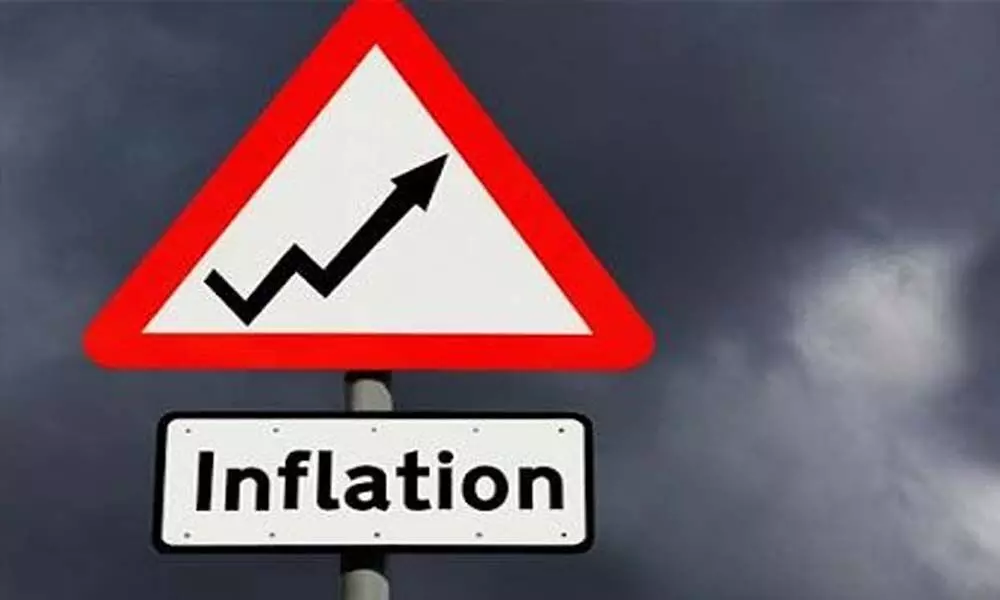CPI, core inflation moderate in June
The share of non-discretionary spend on items like fuel has jumped to 75 % in June
image for illustrative purpose

CPI inflation moderated marginally to 6.26 per cent in June from 6.30 per cent in May. Core also moderated to 6.16 per cent. The headline inflation was much lower than market expectations and surprised pleasantly on the downside, says a report by Ecowrap from SBI's economic research wing.
Food items, especially protein items, oils and fats though are still exhibiting increase in prices in contrast with the global trend. The FAO Food Price Index averaged 124.6 points in June, down 2.5 per cent from May. The decline in June marked first drop in the index following 12 consecutive monthly increases and was brought about by decline in prices of vegetable oils, cereals and, dairy products, it said.
Interestingly, the decline in June inflation print reveals an across-the-board decline in sequential momentum. Items in core basket having disproportionately larger weights that had exhibited significant jump in prices in May are now back to trend path. Surprisingly most items in food and non-food have registered a de-growth in June. This raises the broader question whether the May inflation print was a data aberration given that most of the country was under the grip of a lockdown in May. Interestingly this is all the more possible as core inflation in May has undergone a large downward revision.
Coming to the other major component fuel, between May and June, the international crude prices went up by $6/bbl. The future outlook hinges on the production increases by OPEC+. The recently cancelled meeting of OPEC+ indicates that we are headed towards elevated levels in Brent and this will have cascading impact on fuel inflation in India.
"Our calculations show that with every 10 per cent increase in petrol pump prices (Mumbai) there is 50 bps increase in CPI," said Soumya Kanti Ghosh, chief economic advisor to the SBI group. The June inflation number perhaps reflects another interesting trend. As consumers are spending more on fuel, it is crowding out expenses on health.
"Our analysis of SBI Card spends indicates that spend on non-discretionary health expenditure has been substantially reduced to accommodate increased expenditure on fuel," he added. In fact, such spending has more than crowded out the spending on other non-discretionary items, like grocery and utility services to such an extent that the demand for such products has significantly declined. The share of non-discretionary spend on items like fuel has jumped to 75 per cent in June from 62 per cent in March.
Even though inflation has shown marginal decline, the levels are still elevated and combined with a decline in financial savings, are adding to household challenges. According to preliminary estimates by RBI, the household financial savings rate in Q3 FY21 has come down to 8.2 per cent of GDP from 21 per cent and 10.4 per cent in the previous two quarters. Interestingly, the savings rate in US has gone to 34 per cent of GDP in April from 8.0 per cent in December.
Ecowrap estimate indicates that during the second wave period (June over March) the number of districts with deposits outflows might be double than the first wave.
Various leading indicators, including port cargo traffic, freight traffic, railway freight earning, manufacturing PMI, steel consumption have worsened sequentially in June compared to their levels in May. Also, the second wave of the pandemic is exhibiting a fat tail with daily new cases in India still above 40,000. The 7D moving average of daily vaccine doses has come down to 33.7 lakh from a maximum of 60.2 lakh as on June 27.
'We need to increase vaccination speed to defeat the pandemic. If India speeds up the vaccination rate to 70 lakh per day, then the entire adult population can be covered by the end of FY22', the report says.

